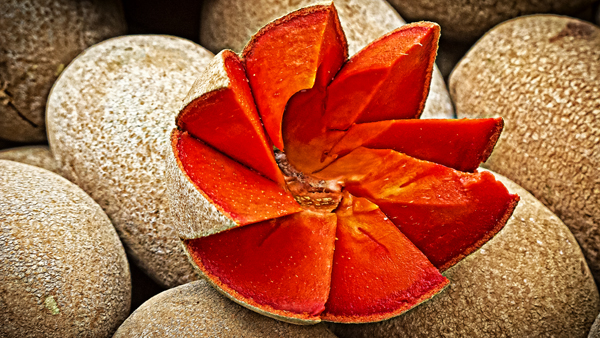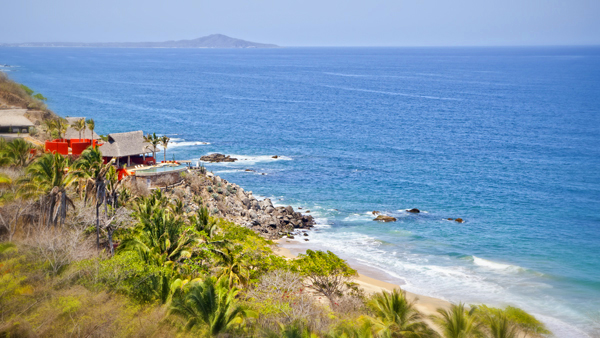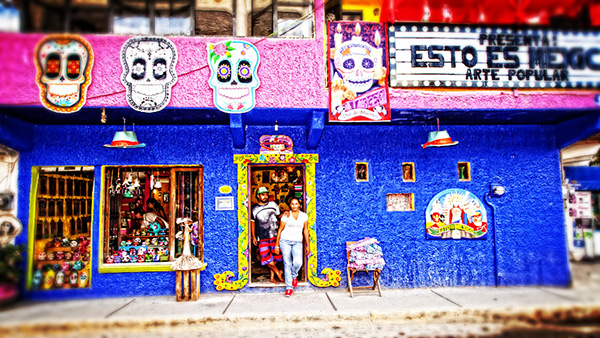En este blog examinaremos al mamey, un fruto del árbol mamey zapote. El arbol es grande, de hoja perenne y ornamental que se eleva hasta entre 18 o 42 metros, y produce la fruta mostrada aquí. Estas frutas tienen un color cafe débil en el exterior y una aparencia indescriptible, creciendo hasta unos 10-25 centímetros de alto por 8-12 centímetros de ancho. Como sea, el difuso y rugoso exterior café esconde una joya por dentro, porque la parte comestible ofrece un hermoso, color naranja intenso. Se puede decir que está maduro cuando la cáscara se siente suave al tacto. Pero determinar esto, no es usualmente necesario, ya que estas frutas son peladas y expuestas formando un patrón ornamental similar a la flor de tulipán. Además, frecuentemente los vendedores cortan la fruta cerca del tallo para que los clientes potenciales puedan ver que el interior no es verde, sino rosado y maduro.
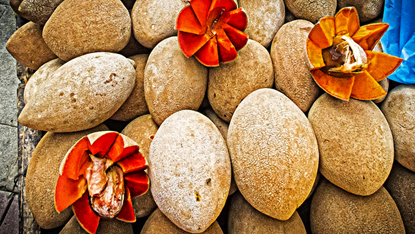
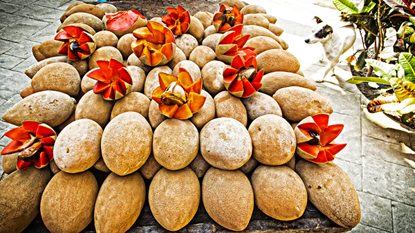
Cuando llega la temporada del mamey, aparecerán hombres con carretillas repletas de mamay en las esquinas de Sayulita, algunas frutas peladas con el característico patron en zig zag para mostrar su color y madurez. Llegó la hora del Mamey.
Puedes comer esta fruta fresca y cruda, en fruta salada, o puedes convertirla en helado, malteadas, smoothies, o barras de fruta. Muchos mexicanos la utilizan en pasteles y batidos de bizcocho, y se puede hacer un mousse fino también. Además puedes hacer mermelada de mamey. Se dice que tiene propiedades afrodisíacas, aunque no pudimos encontrar evidencia de ello.
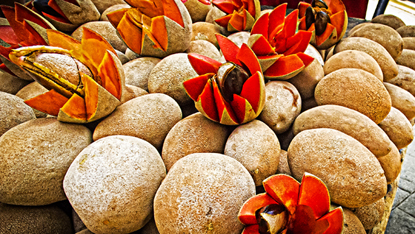
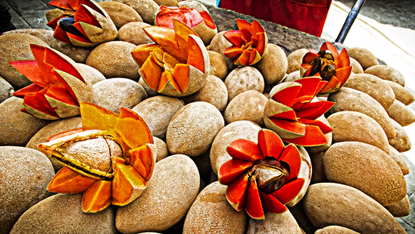
¿Y qué hay del sabor? Como siempre, al probar una fruta nueva, uno termina comparándola con otras—en este caso, con la calabaza, durazno, cherry, even sweet potato. All hinted at, but really, like most fruit, the mamey has its own distinct taste.
In the middle lies a large, shiny black seed, which in turn can be peeled, revealing a yellow kernel. This kernel can be split, and in doing so, an odor faintly reminiscent of almonds is released.
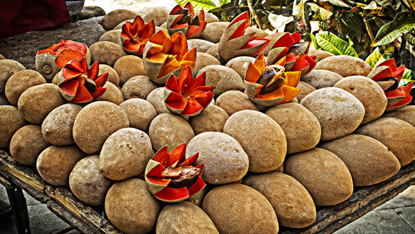
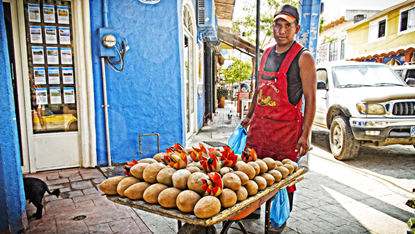
I’ve noticed this odor around many fruit pits, and as it turns out, the source of that distinct, almond aroma is cyanide, the notoriously toxic poison. Sounds scary, but the minute quantities present in mamey pits can easily be neutralized by boiling the pits. In parts of Mexico, these pits are called pixtlis, and after being boiled with herbs and smoked, they are used to flavor mole. These pits have been used for flavoring since Aztec times, when it was used in chocolate drinks, and today, in Oaxaca, you’ll find it in tejate, the cacao drink served at markets and fairs.
On the healthy side, mamey is a good source of vitamins C, A, and B6 as well as iron, riboflavin, magnesium, and copper. Mameys do grow in Florida, but coming from the northwest, I had never seen or tasted this fruit until I spent some time in Mexico.
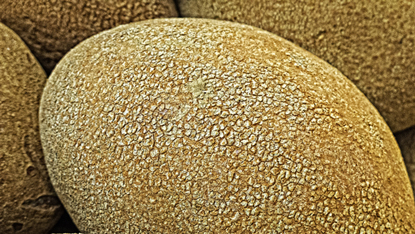
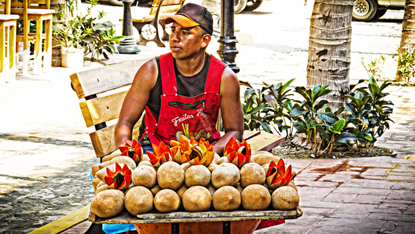
A minor note of caution: you should not cook with the mamey pits sold in bags at herb or medicinal stalls in Mexican markets. Those pits are meant to be grated and added to shampoo, for it is said that mamey pits will also make thinning hair grow thicker and more curly. The pits meant for kitchen use are sliced, strung together, and sold in necklace form.


